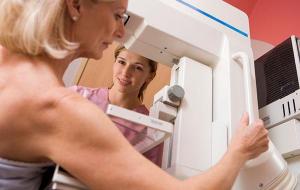 Thanks to remarkable improvements in cancer detection, care and research, millions of women are surviving breast cancer today.
Thanks to remarkable improvements in cancer detection, care and research, millions of women are surviving breast cancer today.
Our
last post talked about treatment options and detection methods. This
time, we’re talking about the role of personal care when diagnosed with
breast cancer, as well as preventive measures and risk factors.
Personal Care
The
idea of undergoing any cancer treatment can be difficult, which is why
Dr. Jorge Perez and his team strive to offer immediate Advanced Cancer Care to patients and their families.
“I
work personally with patients and their families and collaborate
closely on disease management,” said Dr. Perez. “ I want all of my
patients to beat their cancer, and I will do everything that I can to
help them restore their health.”
The team prides itself on its
personal approach, and SNCC patients become part of our extended family
of cancer warriors and survivors.
“We are here to help,” said Dr.
Perez. “While you are in our care, we want you to feel like you have a
friend — and a resource that can help connect you with information,
support, ideas or just an ear to listen.”
And the best feedback we can hear is that our patients felt supported throughout the process.
"I feel very blessed that the Sierra Nevada Cancer Center
has been helping me fight my spreading breast cancer,” said SNCC
patient and South Lake Tahoe resident Kathy B. “Dr. Perez and his staff
are very supportive, inspirational, professional and secure. An illness
like mine makes life difficult every day, but being able to communicate
and stay focused on my medications helps me stay strong and encouraged
to continue with all my treatments. Thank you with all my heart and
soul."
Preventive Measures
Treatment and early detection is what has given the millions of breast cancer survivors their best chance at beating cancer.
To reduce your risk of breast cancer:
- Increase your level of physical activity
- Maintain a healthy weight and diet
- Decrease the consumption of alcohol
- Talk with your doctor about ways to avoid Combined Hormone Replacement Therapy (HRT)
Risk Factors
Many factors contribute to the risk of developing breast cancer — gender, age, family history and race among them.
- Breast cancer occurs nearly 100 times more often in women than in men. Men can also be diagnosed with breast cancer, but they have a far greater risk developing Prostate Cancer.
- Two out of three women with invasive cancer are diagnosed after age 55.
- If your mother, sister, father or child has been diagnosed with breast cancer, the risk of you developing breast cancer increases, especially if your relative was diagnosed before the age of 50.
- It is unknown as to why, but breast cancer is more common in Caucasian women.
Keep in mind: You only have control over some aspects of your risk factors. Sierra Nevada Cancer is here to help if you are diagnosed, with facilities and treatments that will encourage healing in your battle against cancer.
For more information about breast cancer, click here. http://www.sierranevadacancer.com/news/focus-breast-cancer
